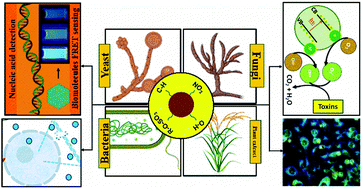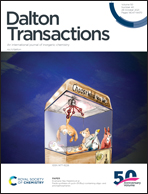Current advances in bio-fabricated quantum dots emphasising the study of mechanisms to diversify their catalytic and biomedical applications
Abstract
Quantum dots (QDs), owing to their single atom-like electronic structure due to quantum confinement, are often referred to as artificial atoms. This unique physical property results in the diverse functions exhibited by QDs. A wide array of applications have been achieved by the surface functionalization of QDs, resulting in exceptional optical, antimicrobial, catalytic, cytotoxic and enzyme inhibition properties. Ordinarily, traditionally prepared QDs are subjected to post synthesis functionalization via a variety of methods, such as ligand exchange or covalent and non-covalent conjugation. Nevertheless, solvent toxicity, combined with the high temperature and pressure conditions during the preparation of QDs and the low product yield due to multiple steps in the functionalization, limit their overall use. This has driven scientists to investigate the development of greener, environmental friendly and cost-effective methods that can circumvent the complexity and strenuousness associated with traditional processes of bio-functionalization. In this review, a detailed analysis of the methods to bio-prepare pre-functionalized QDs, with elucidated mechanisms, and their application in the areas of catalysis and biomedical applications has been conducted. The environmental and health and safety aspects of the bio-derived QDs have been briefly discussed to unveil the future of nano-commercialization.

- This article is part of the themed collection: 2021 Frontier and Perspective articles


 Please wait while we load your content...
Please wait while we load your content...